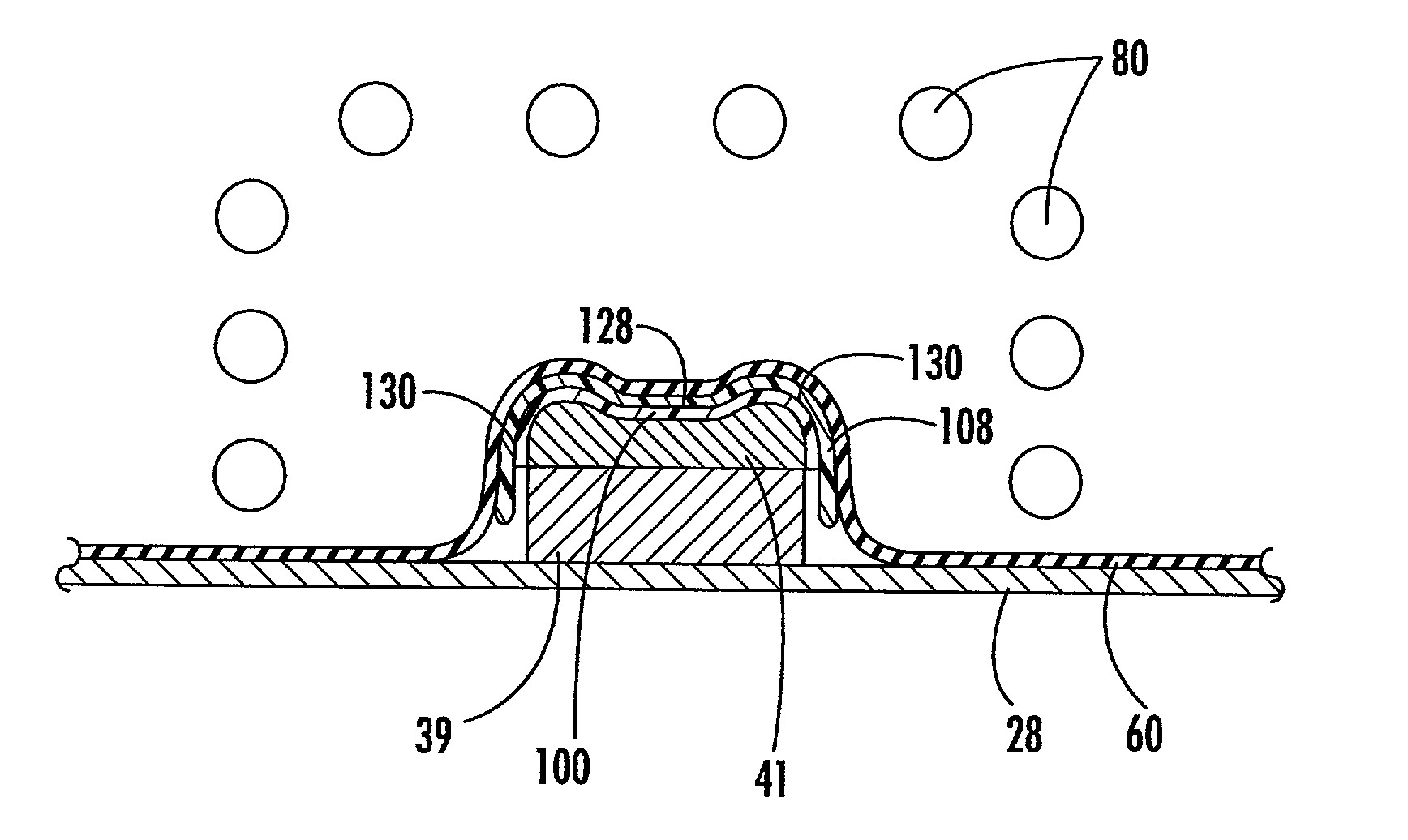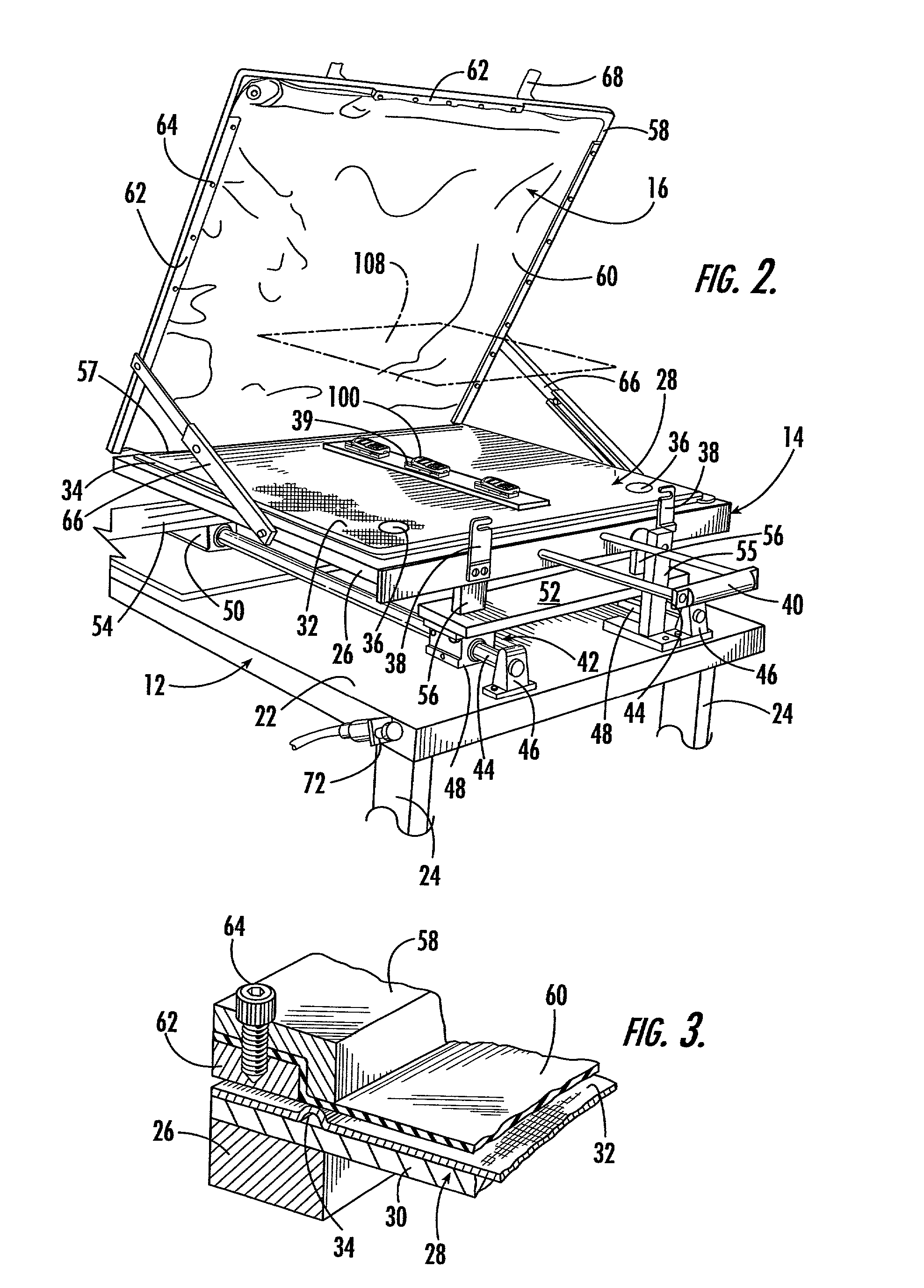Apparatus with multi-directional radiation emitters for printing a dye image onto a three dimensional object
a dye image and multi-directional radiation technology, applied in the field of dye image application, can solve the problems of poor quality transfer image, general unacceptable results when applied to three-dimensional objects, and lack of flexibility necessary to mold to the required three-dimensional shapes, and achieve the effect of optimal heating efficiency
- Summary
- Abstract
- Description
- Claims
- Application Information
AI Technical Summary
Benefits of technology
Problems solved by technology
Method used
Image
Examples
Embodiment Construction
[0021]Referring now to the drawings, the apparatus of the instant invention is illustrated and generally indicated at 10 in FIG. 1. The apparatus 10 is operable for applying dye images to three dimensional objects, particularly objects with plastic outer surfaces, in accordance with processes of the type wherein a flexible sheet bearing a transfer dye in the mirror of a desired image, known as a carrier sheet, is overlaid on the object and the image is transferred to the object through the application of heat to the dye while the carrier sheet is maintained in pressurized engagement with the object. The apparatus 10 generally comprises a base 12, a bed assembly 14, a flexible membrane assembly 16 that is positionable in overlying relation on the bed assembly 14, a vacuum assembly 18 and a radiant heating assembly 20. The vacuum assembly 18 is in fluid communication with the bed assembly and is operable for evacuating the area between the membrane assembly 16 and the bed assembly 14 ...
PUM
| Property | Measurement | Unit |
|---|---|---|
| flexible | aaaaa | aaaaa |
| angle | aaaaa | aaaaa |
| distance | aaaaa | aaaaa |
Abstract
Description
Claims
Application Information
 Login to View More
Login to View More - R&D
- Intellectual Property
- Life Sciences
- Materials
- Tech Scout
- Unparalleled Data Quality
- Higher Quality Content
- 60% Fewer Hallucinations
Browse by: Latest US Patents, China's latest patents, Technical Efficacy Thesaurus, Application Domain, Technology Topic, Popular Technical Reports.
© 2025 PatSnap. All rights reserved.Legal|Privacy policy|Modern Slavery Act Transparency Statement|Sitemap|About US| Contact US: help@patsnap.com



